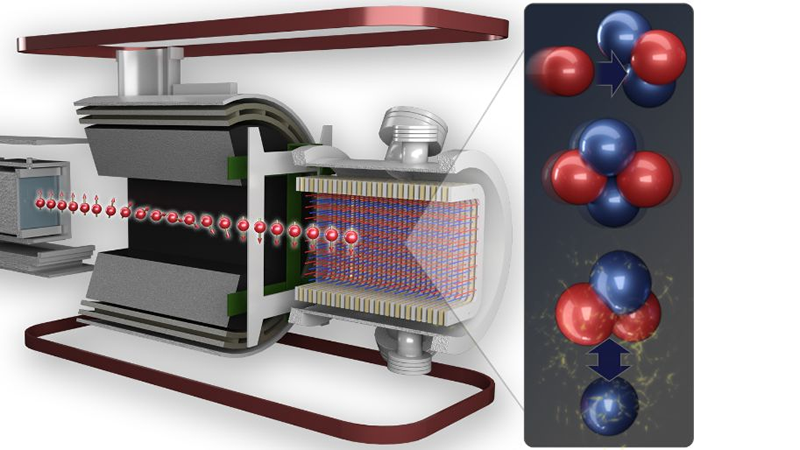September 24, 2020

Through a one-of-a-kind experiment at the Department of Energy’s Oak Ridge National Laboratory, nuclear physicists have precisely measured the weak interaction between protons and neutrons. The result quantifies the weak force theory as predicted by the Standard Model of Particle Physics.
The team’s weak force observation, detailed in Physical Review Letters, was measured through a precision experiment called n3He, or n-helium-3, that ran at ORNL’s Spallation Neutron Source, or SNS. Their finding yielded the smallest uncertainty of any comparable weak force measurement in the nucleus of an atom to date, which establishes an important benchmark.
The Standard Model describes the basic building blocks of matter in the universe and fundamental forces acting between them. Calculating and measuring the weak force between protons and neutrons is an extremely difficult task.
“Because the interactions we’re looking for are very weak, the effects that we want to detect in precision nuclear physics experiments are very small and, therefore, extremely difficult to observe,” said David Bowman, co-author and team leader for fundamental neutron physics at ORNL.
The weak force is one of four fundamental forces in nature, along with the strong nuclear force, electromagnetism and gravity, and describes interactions between subatomic particles called quarks that make up protons and neutrons. The weak force is also responsible for an atom’s radioactive decay. Certain mechanisms of the weak force are among the least understood aspects of the Standard Model.
Read more at ornl.gov/news.
Related Publication: Gericke, M.T., et.al. (2020). First Precision Measurement of the Parity Violating Asymmetry in Cold Neutron Capture on 3He. Physical Review Letters 125, 131803. doi.org/10.1103/PhysRevLett.125.131803